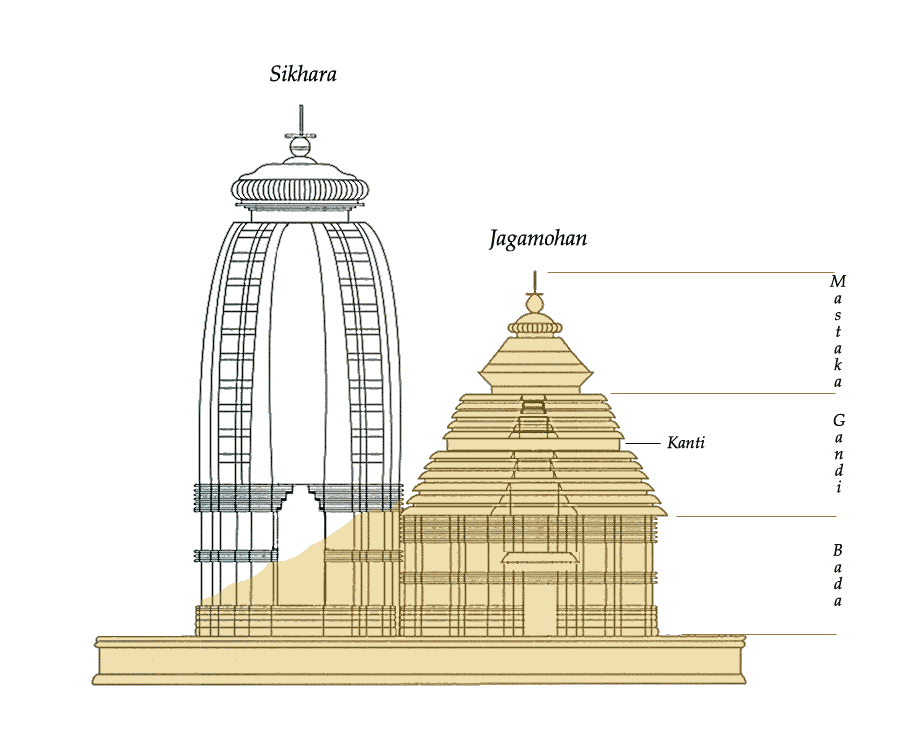Many temples have a pointed top. Other structures have a decreasing diameter as the height increases (near the top).
Is there any significance behind this?
For those interested, this question discusses the use of flags on temple tops.
Many temples have a pointed top. Other structures have a decreasing diameter as the height increases (near the top).
Is there any significance behind this?
For those interested, this question discusses the use of flags on temple tops.
The two types of structures you seem to describe are:

A Hindu temple has a Shikhara (Vimana or Spire) that rises symmetrically above the central core of the temple. These spires come in many designs and shapes, but they all have mathematical precision and geometric symbolism. One of the common principles found in Hindu temple spires is circles and turning-squares theme (left), and a concentric layering design (right) that flows from one to the other as it rises towards the sky.
 Scholars suggest that this shape is inspired by cosmic mountain of Meru or Himalayan Kailasa, the abode of gods according to Vedic mythology.
Scholars suggest that this shape is inspired by cosmic mountain of Meru or Himalayan Kailasa, the abode of gods according to Vedic mythology.
Source: Wikipedia
This link also speaks about the history and evolution of different types of domes in Hindu temples. For instance, it refers to the various parts of the shikhara representing different elements. There was also an evolution towards better formed concentric spires with thinner tops as architectural practices evolved (warning: I cannot vouch for this theory myself, I merely cite it)